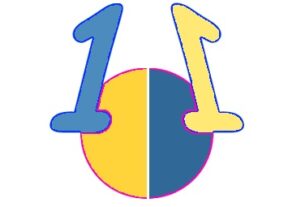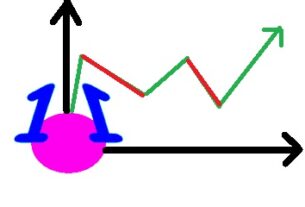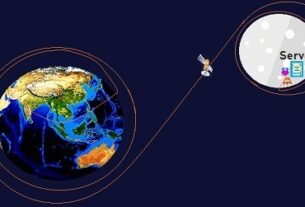What is Python?
Python is a popular programming language created by Guido van Rossum. A programming language is a type of written language that tells computers what to do in order to work. Apart from Python, there are many other programming languages like C, C++, Java, PHP, etc. By using these programming languages you can create your own software or applications.
Why Python is popular?
- Python is very easy to learn even for beginners and newcomers.
- Python has a simple syntax similar to English language.
- Python works on different platforms (Windows, Mac, Linux, Raspberry Pi, etc).
- Moreover, Python has emerged as the default language for Artificial Intelligence and Data Science.
Python Command Line
Open your command prompt and type ‘python’
C:\Users\Your Name>python
Or, if the “python” command did not work, you can try “py”:
C:\Users\Your Name>py
From there you can write any python code
>>> a = 1
>>> a
1
>>> b = ‘Hi’
>>> b
‘Hi’
>>> v = ‘Hello World’
>>> v
‘Hello World’
>>> exit()
exit() or Ctrl-Z plus Return to exit
Python Comments
Comments starts with ‘#’ and Python ignores that line.
>>> a = 1
>>> a
1
>>> a = 2
>>> a
2
>>>
>>>
>>> a = 1
>>> a
1
>>> # a = 2
>>> a
1
>>>
Comments can also be placed at the end of a line, and Python will ignore the rest of the line.
Use of Comments
- Comments can be used to explain Python code.
- Comments can be used to make the code more readable.
- Comments can be used to prevent execution when testing code.
Variables:
Variables are used for storing values.
In previous command line examples a, b and v are called variables.
myvariablename = ‘Byte-man’
You can use different techniques to make variables more readable. Most popular are:
Camel – myVariabeName = ‘Byte-man’
Pascal – MyVariableName = ‘Byte-man’
Snake – my_variable_name = ‘Byte-man’
Assigning variables values
a = 1
b = 2
c = 3
print(a, b, c)
a, b, c = 1, 2, 3
print(a, b, c)
in both cases the output is same, it is:
1 2 3
Data Types
Variables have different types. Python has various data types built-in by default. Notable ones:
Text Type: str
Numeric Types: int, float
Sequence Types: list, tuple
Mapping Type: dict
Set Types: set
Boolean Type: bool
a = 1
print(type(a))
<class ‘int’>
b=’hi’
print(type(b))
<class ‘str’>
c = True
print(type(c))
<class ‘bool’>
d = [1, 2, 3]
print(type(d))
<class ‘list’>
e = (1, 2, 3)
print(type(e))
<class ‘tuple’>
f = 3.14
print(type(f))
<class ‘float’>
Type Casting
Sometimes you have to specify a type of a variable or want a variable into specific type. This can be done by casting.
input => output
float(9) => 9.0
int(9.9) => 9
int(‘9’) => 9
int(‘V’) => gives error
str(9) => “9”
str(9.99) => “”9.99”
Bool = Boolean = True / False
type(True) => bool
bool(1) => True
bool(0) => False
int(False) => 0
int( True) => 1
Mathematical Operations
Operators are used to perform operations on variables and values.
9 + 108 + 365
Here 9, 108, & 365 are Operators while + is Operand.
Operator Name Example
- Addition x + y
- Subtraction x – y
- Multiplication x * y
- / Division x / y
- % Modulus x % y
- ** Exponentiation x ** y
- // Floor division x // y
Example
x = 1/1
print(x) => 1.0
type(x) => float
another example
x = 1//1
print(x) => 1
type(x) => int
x = 1//2
print(x) => 0
x = 2//1
print(x) => 2
Comparison operators
Equal -> x == y
Not equal -> x != y
Greater than -> x > y
Less than -> x < y Greater than or equal to -> x >= y
Less than or equal to -> x <= y
String
In python, a string is a sequence of characters. (Double quotes or single quotes)
‘Hi Earth’
| H | i | E | a | r | t | h | |
| 0 | 1 | 2 | 3 | 4 | 5 | 6 | 7 |
| -8 | -7 | -6 | -5 | -4 | -3 | -2 | -1 |
Take another example:
name = ‘Captain Planet’
| C | a | p | t | a | i | n | P | l | a | n | e | t | |
| 0 | 1 | 2 | 3 | 4 | 5 | 6 | 7 | 8 | 9 | 10 | 11 | 12 | 13 |
- name[starting point: length from given start point]
name[0:4] = Capt
name[8:12] = Plan
:: is called Stride
- name[ starting point : limit point : gap ]
name[0:5:2] = Cpa (here 5 is indicating index should be less than 5 only)
name[1::2] = ati lnt (here 1 is starting point & 2 is gaps)
name[::2] = CpanPae
- To find the length of a string,, len() function is used.
len(“Captain Planets”) = 15
- Multiplying string with any integer(N) will gives new string repeated N number of times.
print(‘hi’ * 3) or print(3 * ‘hi ‘) => hi hi hi
- By using ‘+’ between two strings you can get new string with joining both
example = ‘Hello ‘ + ‘World’
print(example) => Hello World
- String is immutable.
Name = “Captain Planets”
Name[0] = “P” -> Gives TypeError as String is immutable.
- Escape character s a backslash \ followed by the character you want to insert. For example:
\n -> new line character
print(“Captain Planets \n is the best”);
output -> Captain Planets
is the best
\t -> tab
\\ -> for representing \
print(“Captain \\ Planets”) -> Captain \ Planets
print(r “Captain \n Planets”) -> Captain \n Planets
upper()-> The upper() methods returns the upper cased string from the given string. It converts all lowercase characters to uppercase. Let’s take one example…
str5 = Hello, how are you?
print(str5.upper())
Your output will be:
HELLO, HOW ARE YOU?
lower() -> The lower() methods returns the lower cased string from the given string. It converts all uppercase characters to lowercase.
Let’s take another example…
str6 = ‘Nitrogen is a nonmetal whose symbol is N’
print(str6.lower())
Your output will be:
nitrogen is a nonmetal whose symbol is n
replace() -> The replace() method return new string with replacing the characters with new ones if specified phrase is found.
A = “Green Earth”
B = A.upper() -> GREEN EARTH
B =A.replace(‘Green’, ‘Save’) -> Save Earth
find() -> The find() method finds the first occurrence of the specified value.
| C | a | p | t | a | i | n | P | l | a | n | e | t | |
| 0 | 1 | 2 | 3 | 4 | 5 | 6 | 7 | 8 | 9 | 10 | 11 | 12 | 13 |
Name = “Captain Planets”
Name.find(‘in’) = 5 (starting point)
Name.find(‘Plan’) = 8
Name.find(‘Caps’) = -1 -> Unavailable so -1
Continue Reading... Basic Introduction To Python II



